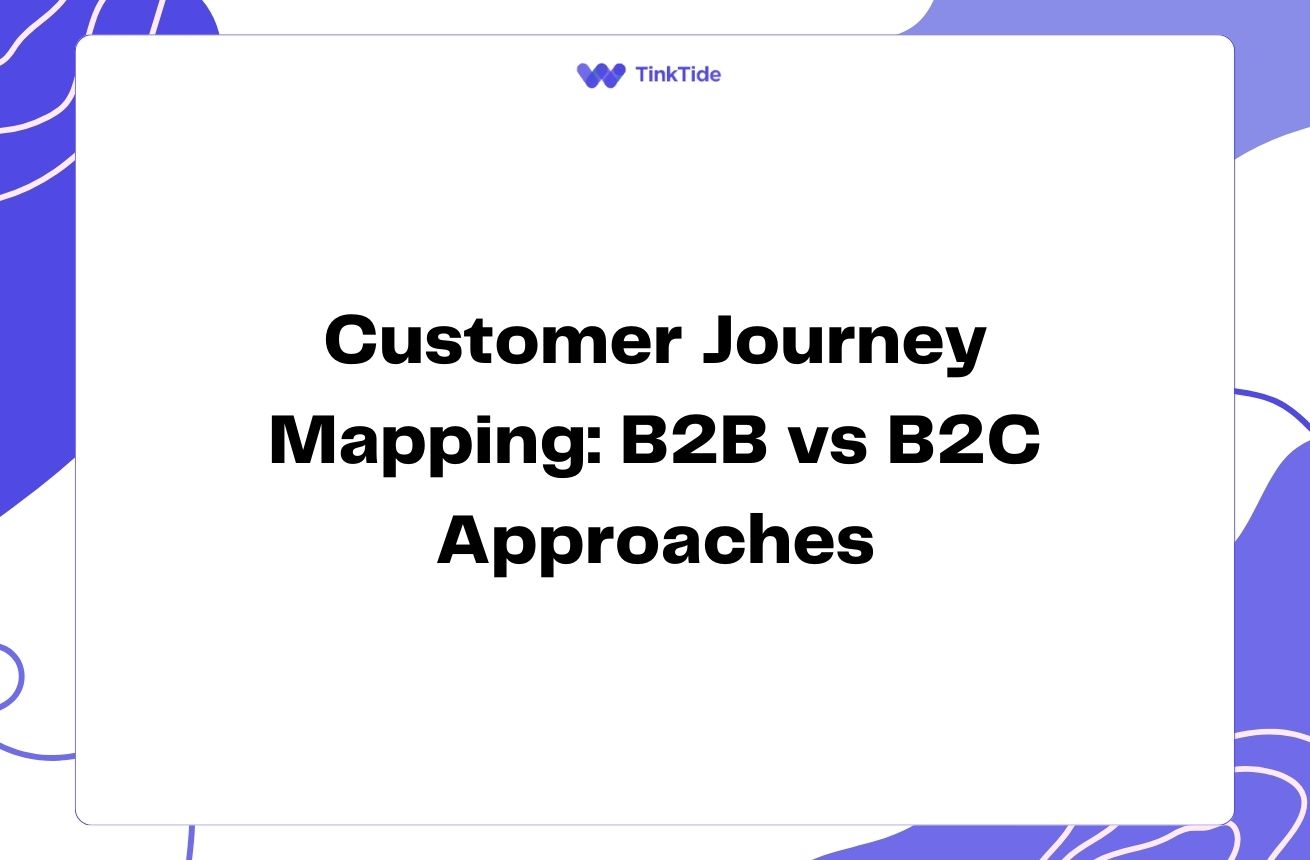Boost Retention and Loyalty with Customer Journey Mapping
Understanding Customer Journey Mapping
Customer journey mapping is a powerful tool that visualizes the entire customer experience with your brand. It's like creating a roadmap of every interaction a customer has with your business, from initial awareness to post-purchase support. By understanding this journey, you can identify pain points, optimize touchpoints, and ultimately improve retention rates and foster loyalty.
Think of customer journey mapping as a GPS for your business. Just as a GPS helps you navigate unfamiliar terrain, journey mapping guides you through the complex landscape of customer interactions. It highlights the routes your customers take, the obstacles they encounter, and the destinations they hope to reach.
The beauty of customer journey mapping lies in its ability to provide a holistic view of the customer experience. It goes beyond simple metrics and delves into the emotions, motivations, and expectations of your customers at each stage of their journey. This comprehensive understanding is crucial for developing strategies that not only retain customers but turn them into loyal advocates for your brand.
According to a study by McKinsey & Company, companies that excel in customer journey management can increase customer satisfaction by 20% and revenue by 15% while lowering the cost of serving customers by 20%. These statistics underscore the significant impact that effective journey mapping can have on your business's bottom line.
Key Components of Customer Journey Mapping
To create an effective customer journey map, you need to include several key components. These elements will help you gain a comprehensive understanding of your customers' experiences and identify areas for improvement.
- Customer Personas: Detailed profiles of your typical customers
- Touchpoints: All interactions between the customer and your brand
- Customer Actions: What customers do at each stage of their journey
- Emotions: How customers feel during each interaction
- Pain Points: Challenges or frustrations customers experience
- Opportunities: Potential areas for improving the customer experience
Leveraging Journey Maps for Improved Retention
Once you've created your customer journey map, it's time to use it as a tool for improving retention rates. Start by identifying the critical moments in the customer journey where retention is at risk. These might include the period immediately after purchase, when a customer encounters a problem, or when it's time for renewal.
For example, let's say you run a software-as-a-service (SaaS) company. Your journey map might reveal that many customers struggle with onboarding and lose interest within the first month. Armed with this insight, you could develop a more robust onboarding process, offer personalized training sessions, or create a series of helpful getting-started emails.
Another strategy is to use journey mapping to identify and eliminate friction points. These are areas where customers experience difficulty or frustration, which can lead to churn. By smoothing out these rough spots, you can create a more seamless experience that encourages customers to stick around.
According to Gartner, organizations that use customer journey mapping to support customer experience initiatives see a 15-20% reduction in service costs and a 10-15% increase in cross-selling and up-selling opportunities. This demonstrates how journey mapping can directly impact your retention efforts and overall business success.
Fostering Customer Loyalty Through Journey Insights
Customer journey mapping isn't just about fixing problems; it's also about identifying opportunities to delight your customers and build lasting loyalty. By understanding the emotional highs and lows of your customers' experiences, you can create moments of delight that turn satisfied customers into loyal brand advocates.
One effective strategy is to use journey insights to personalize the customer experience. For instance, if your map shows that customers value quick response times, you might implement a chatbot for instant support or offer priority service to long-term customers. This level of personalization shows customers that you understand and value their needs, fostering a deeper sense of loyalty.
Another approach is to use journey mapping to anticipate customer needs. By understanding the typical progression of a customer's relationship with your brand, you can proactively offer solutions or upgrades at just the right moment. This not only improves the customer experience but also demonstrates your commitment to their success.
Research from PwC shows that 73% of consumers point to customer experience as an important factor in their purchasing decisions. By using journey mapping to consistently deliver positive experiences, you can significantly boost customer loyalty and retention.
Implementing Customer Journey Mapping in Your Business
Implementing customer journey mapping in your business doesn't have to be a daunting task. By following a structured approach, you can create insightful journey maps that drive real improvements in customer retention and loyalty.
- Step 1: Define your objectives and scope
- Step 2: Gather customer data from various sources
- Step 3: Create detailed customer personas
- Step 4: Map out all customer touchpoints
- Step 5: Analyze the journey from the customer's perspective
- Step 6: Identify pain points and opportunities
- Step 7: Develop strategies to improve the journey
- Step 8: Implement changes and monitor results
Measuring the Impact of Journey Mapping
To ensure that your customer journey mapping efforts are paying off, it's crucial to measure their impact on your retention rates and customer loyalty. Start by establishing baseline metrics before implementing your journey mapping strategies. These might include customer retention rate, Net Promoter Score (NPS), Customer Lifetime Value (CLV), and customer satisfaction scores.
After implementing changes based on your journey map insights, regularly track these metrics to gauge improvement. For example, you might see an increase in your retention rate or a boost in your NPS scores. These improvements directly translate to business success, as Harvard Business Review reports that increasing customer retention rates by just 5% can increase profits by 25% to 95%.
Don't forget to also collect qualitative feedback from your customers. Their stories and experiences can provide valuable context to your quantitative data and help you understand the 'why' behind the numbers. This combination of hard data and customer insights will give you a comprehensive view of how your journey mapping efforts are impacting retention and loyalty.
Remember, customer journey mapping is an ongoing process. As your business evolves and customer expectations change, your journey maps should be updated accordingly. Regularly revisiting and refining your maps will ensure that they remain a relevant and powerful tool for improving customer retention and fostering loyalty.
Common Challenges in Customer Journey Mapping
While customer journey mapping is a powerful strategy, it's not without its challenges. Being aware of these potential pitfalls can help you navigate them more effectively and maximize the benefits of your journey mapping efforts.
One common challenge is data silos. Many organizations struggle to integrate data from various touchpoints and departments, making it difficult to create a comprehensive view of the customer journey. To overcome this, focus on breaking down internal barriers and implementing systems that allow for seamless data sharing across your organization.
Another challenge is maintaining objectivity. It's easy to fall into the trap of mapping the journey you think your customers are experiencing, rather than the one they're actually going through. Combat this by consistently gathering and incorporating customer feedback into your journey maps. Tools like SurveyMonkey or Hotjar can be invaluable for collecting this crucial customer input.
Lastly, many businesses struggle with turning journey map insights into actionable strategies. To address this, ensure that your journey mapping process includes clear steps for translating insights into concrete action plans. Involve key stakeholders from across your organization in this process to ensure buy-in and effective implementation.
Address common questions
Let's address some frequently asked questions about using customer journey mapping to improve retention rates and foster loyalty:
How often should we update our customer journey maps?
Customer journey maps should be living documents that evolve with your business and customers. As a general rule, review and update your maps at least once a year. However, if you're in a rapidly changing industry or have recently made significant changes to your product or service, you may need to update more frequently. Always be open to adjusting your maps based on new customer feedback or data insights.
Can small businesses benefit from customer journey mapping?
Absolutely! While customer journey mapping is often associated with large corporations, it can be incredibly valuable for businesses of all sizes. In fact, small businesses may find it easier to implement changes based on journey map insights due to their agility. The key is to start simple, focus on your most important customer segments, and gradually expand your mapping efforts as you grow.
How do we align our entire organization around the customer journey?
Aligning your organization around the customer journey requires a cultural shift towards customer-centricity. Start by sharing your journey maps widely within your organization and explaining their importance. Involve team members from different departments in the mapping process to gain diverse perspectives. Consider tying employee performance metrics to customer experience improvements to reinforce the importance of the customer journey.
What tools can we use for customer journey mapping?
There are numerous tools available for customer journey mapping, ranging from simple to sophisticated. For beginners, tools like Miro or Lucidchart offer user-friendly interfaces for creating visual journey maps. More advanced options include specialized customer experience platforms like Smaply or UXPressia. Choose a tool that fits your team's skills and your organization's needs.
How can we measure the ROI of our customer journey mapping efforts?
Measuring the ROI of customer journey mapping involves tracking both quantitative and qualitative metrics. On the quantitative side, monitor changes in key performance indicators like customer retention rate, Customer Lifetime Value (CLV), and Net Promoter Score (NPS). Qualitatively, gather feedback from customers and employees about improvements in the customer experience. You can also track the number of pain points resolved and new opportunities leveraged as a result of your journey mapping efforts.
What if our customers have very different journeys?
It's common for businesses to have customers with varying journeys, especially if you serve multiple market segments. In this case, create separate journey maps for each major customer persona or segment. This allows you to tailor your strategies to the specific needs and experiences of different customer groups, ultimately leading to more effective retention and loyalty efforts.
Provide additional resources
Customer Journey Mapping Guide
A comprehensive guide to creating effective customer journey maps from Nielsen Norman Group.
Journey Mapping Tools Comparison
An overview of popular customer journey mapping tools to help you choose the right one for your needs.
Harvard Business Review: The Truth About Customer Experience
An insightful article on the importance of managing the entire customer journey.
Customer Retention Strategies
A collection of effective strategies for improving customer retention.
Building Customer Loyalty Programs
Strategies for creating loyalty programs that keep customers coming back.
Customer Experience Statistics
A compilation of statistics highlighting the importance of customer experience in business success.
Summarize key takeaways
Customer journey mapping is a powerful tool for improving retention rates and fostering loyalty. By visualizing the entire customer experience, businesses can identify pain points, optimize touchpoints, and create moments of delight that turn customers into brand advocates.
Remember, effective journey mapping involves understanding your customers' emotions and motivations, not just their actions. Use this insight to personalize experiences, anticipate needs, and proactively address issues before they lead to churn.
As you implement customer journey mapping in your business, focus on turning insights into action. Regularly update your maps, measure the impact of your efforts, and involve your entire organization in the process of improving the customer experience. With persistence and a customer-centric approach, you can leverage journey mapping to significantly boost retention, loyalty, and ultimately, your bottom line.
Elevate Your Customer Experience Strategy
Ready to transform your approach to customer retention and loyalty? Start mapping your customer journeys today.
Start Your Free Trial
